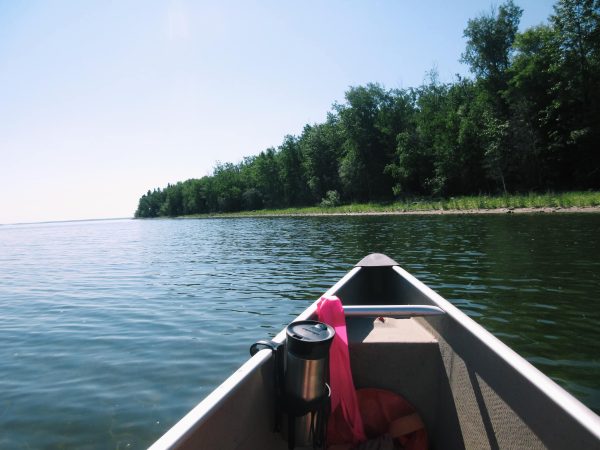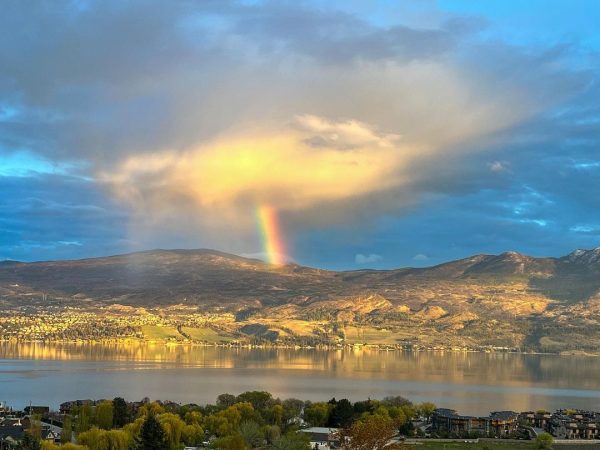113 lakes monitored for the 2nd Annual National Lake Blitz
With so many lakes in Canada, it might be impossible to monitor how they’re all responding to climate change. Living Lakes Canada is tackling this through community-based monitoring. By engaging with folks across the country, the National Lake Blitz program collects data and raises awareness of climate change impacts on lake ecosystems.

2022 Lake Biodiversity Photo Challenge submission by Forest Qiao. A common loon on Lake Simcoe, Ontario.
From May to September 2022, 160 volunteer citizen scientists gathered data on 113 lakes from the Yukon to Nova Scotia. Volunteers collected air and water temperatures and captured photos of their chosen local lake. These observations help track the impact of climate change on lake health and provide a ‘snapshot’ of biodiversity and potential threats.
First-time volunteer Bill Collins chose to monitor Lake Lewis, a popular destination for swimming and boating only 30 minutes from Halifax. “For me, the important aspect of the project is collecting my own basic time series information on my lake,” said Bill. “The Lake Blitz engages me, and hopefully other participants, by giving us a personal interest in capturing some of the changes that happen in our monitored lake(s).”
With the help of committed volunteers like Bill, the 2nd Annual National Lake Blitz soared above the previous pilot year’s accomplishments. We had a 600% increase in program registration, a 350% increase in lakes monitored, and 875 data points submitted. All observations are now available to the public, decision-makers, and researchers at the Lake Blitz Observation Map.
As part of the program, the public was invited to participate in the annual Lake Biodiversity Photo Challenge. Almost 300 photos were submitted of 160 different lakes across Canada. Participants captured a diverse array of plants and animals inhabiting Canada’s lakes as well as some of the threats they face. A Public Favourite and a Judges’ Favourite winner was chosen in three categories: Most Biodiverse, Most Impacted and a Kids’ Category (12 and under).
“This year’s National Lake Blitz far exceeded our expectations both in the number of participants and the quality of the photos and data submitted,” said Camille Leblanc, Program Manager. “It was incredibly exciting to see people from across Canada become inspired by this program and help us understand the impacts that lakes in other provinces and territories are experiencing.”
Going forward, Living Lakes Canada hopes to grow the program and collaborate with more citizen scientists and monitoring groupsWith growing concerns about freshwater health, community-based monitoring programs are increasingly valuable for gathering scientific information and providing the public with opportunities to be part of the solution.
Thank you to the Lake Blitz funders including the Royal Bank of Canada (RBC), the Government of Canada, TD Canada Trust, Lush, Kicking Horse Coffee, David’s Tea, Earth Rangers, and Water Rangers.
Leave a Comment
You must be logged in to post a comment.









Hello. With regard to living lakes and community based monitoring. Kings County in NS has had such a program for 20 years monitoring at least 15 lakes for a variety of parameters. You can find information on the Kings County website and searching for the lake water quality monitoring program. Annual reports of the program can be accessed on the site. They provide a temporal perspective on the quality of the lakes. Many of these lakes have been developed for cottages although an increasing number have full time residents now.